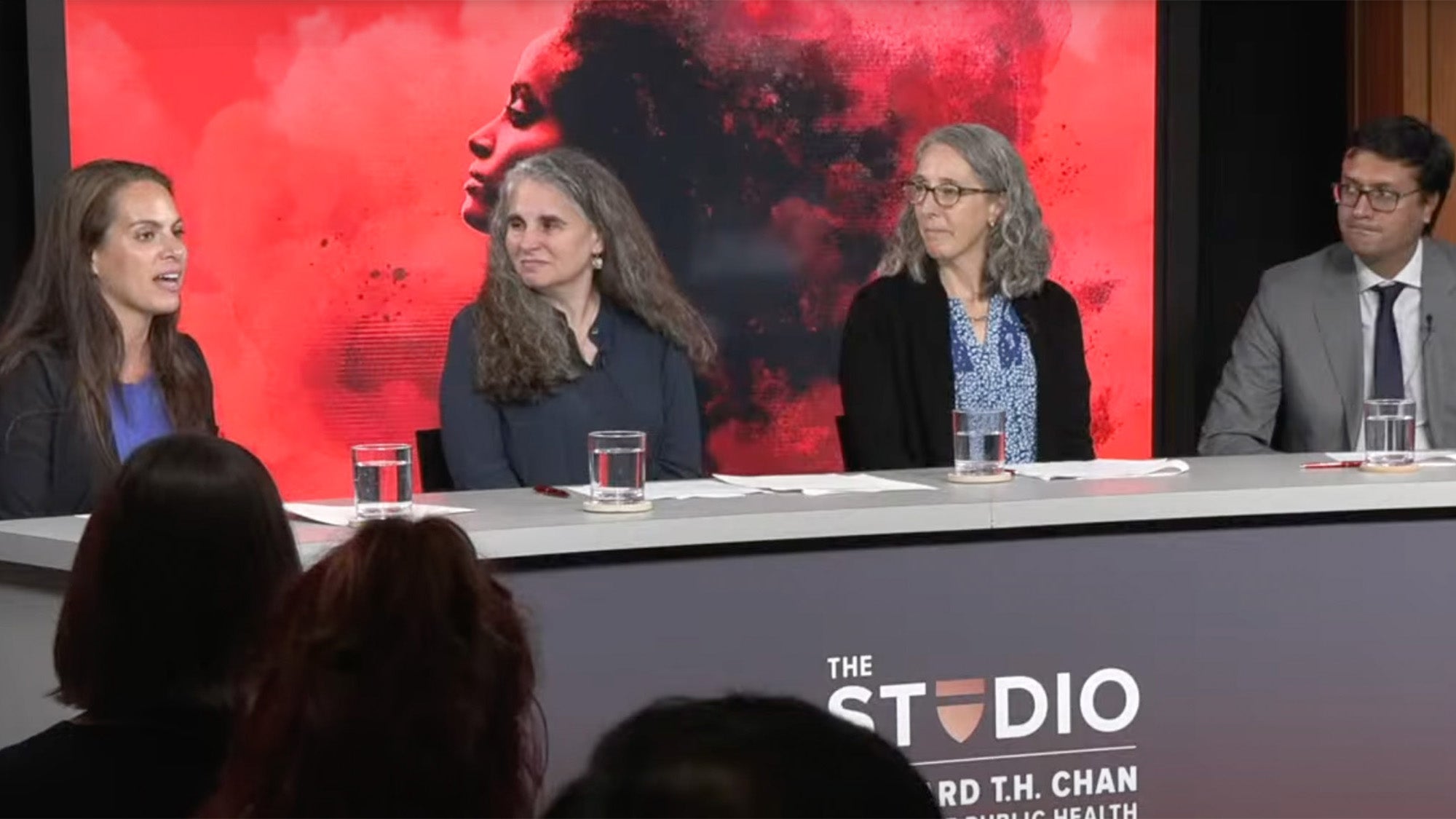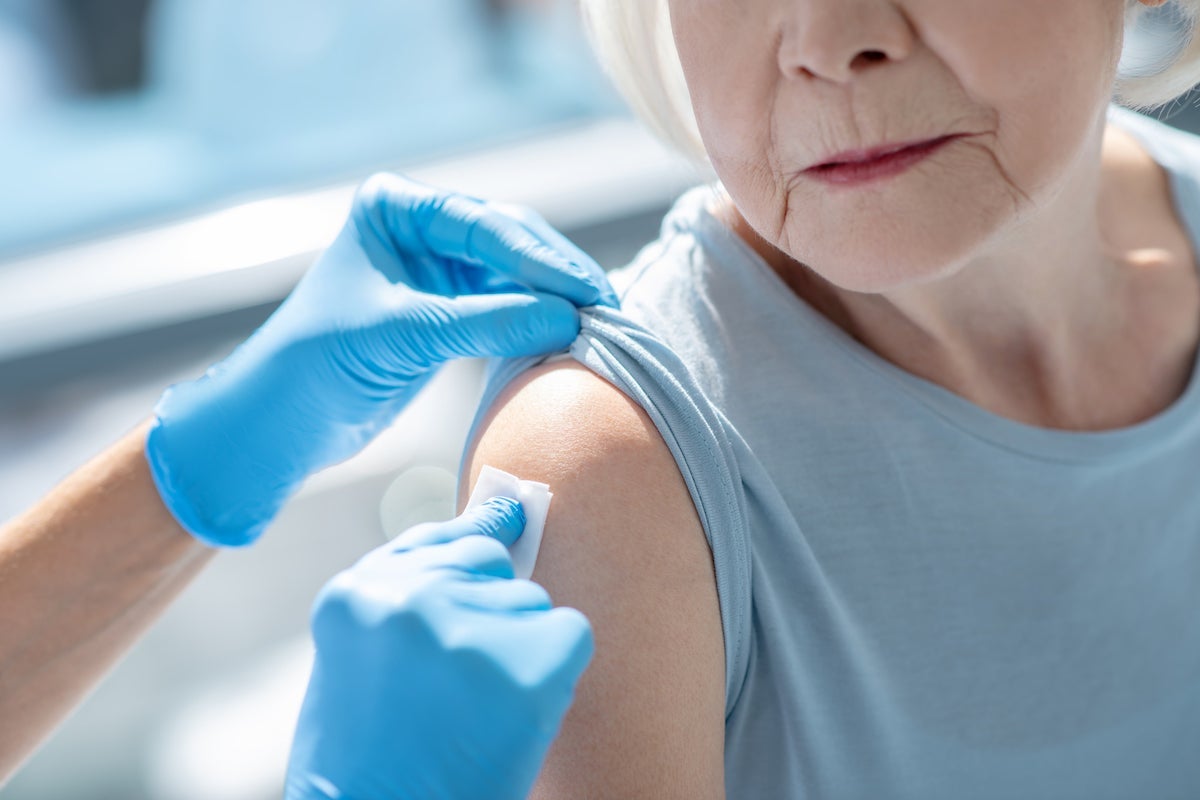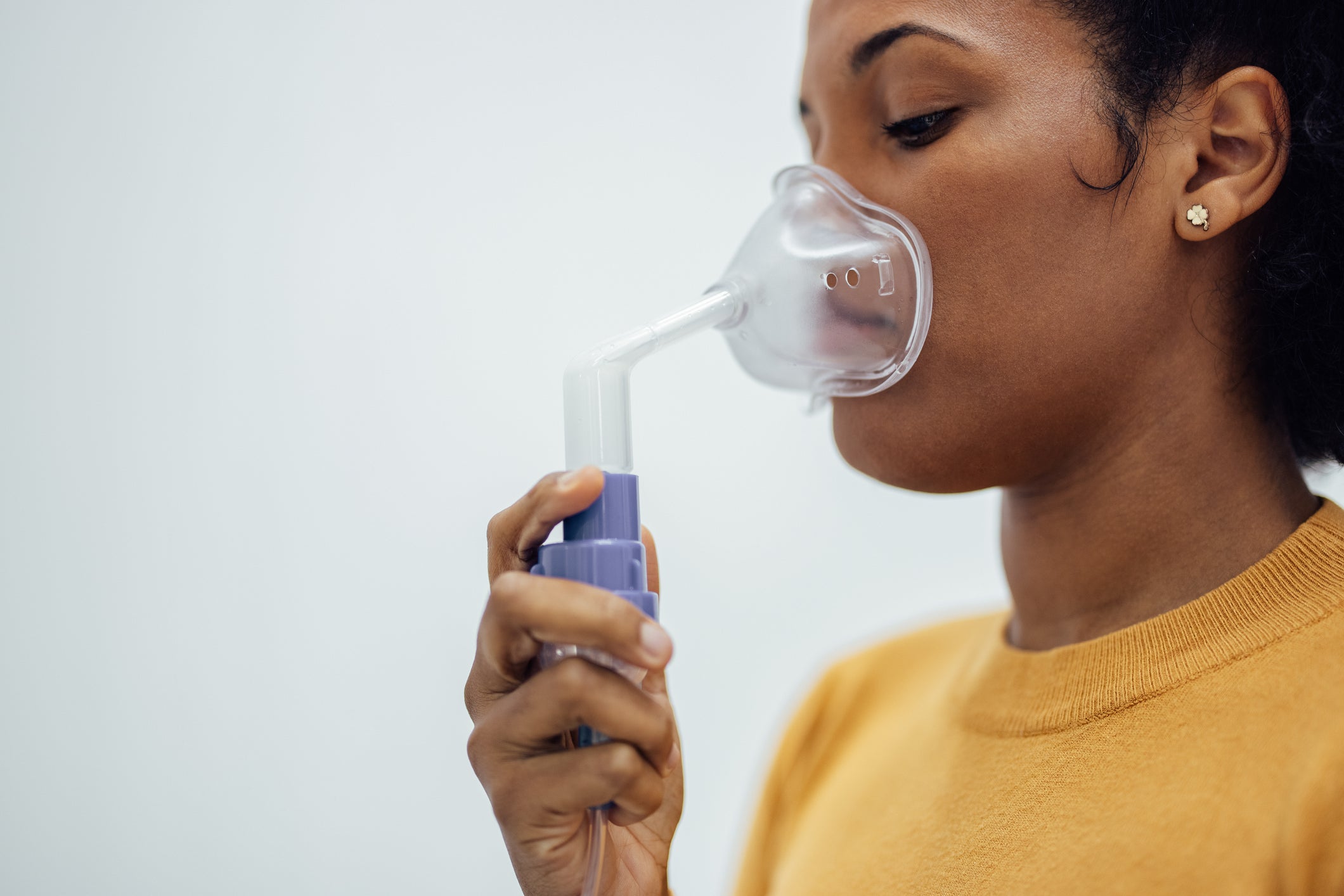Nurses’ Health Study a treasure trove for women’s health research

Panel of Nurses’ Health Study researchers discussed the landmark study’s scientific contributions to understanding women’s health and chronic disease risk.
In 1976, researchers at Harvard under the leadership of Frank Speizer wanted to study the long-term effects of oral contraceptive use on women’s health. Inspired by the British Doctors Study—the world’s first large study of the long-term health consequences of smoking—they decided to recruit a cohort of participants to regularly fill out health-related questionnaires. After a short-lived attempt to study doctors’ wives (the researchers found that many doctors were filling out the questionnaires themselves) they pivoted to a population of women with deep health knowledge and a passion for making a difference: nurses.
Since then, the Nurses’ Health Study (NHS), a collaboration between Harvard T.H. Chan School of Public Health, Brigham and Women’s Hospital, and Harvard Medical School, has vastly expanded the scope of its research questions and recruited nearly 300,000 women across three cohorts. In addition to filling out questionnaires, participants have contributed blood, toenails, and other biological samples and allowed themselves to be tracked through their cellphones and wearable devices.
A Sept. 11 Studio event explored the important advances in knowledge about women’s health that have been made possible by this treasure trove of data—and the questions researchers still hope to answer. Participants included Harvard Chan School faculty members Jorge Chavarro, professor of nutrition and epidemiology, Heather Eliassen, professor of nutrition and epidemiology, and Francine Laden, professor of environmental epidemiology, and Melissa Perez Capotosto, an associate professor at Boston College’s School of Nursing. Mark Herz of GBH News moderated.
Chavarro, principal investigator of Nurses’ Health Study 3 (NHS 3), said that the wealth of information collected from all three cohorts’ participants over the decades provides an opportunity to study pretty much any question relating to women’s health. He and his colleagues receive hundreds of requests to access the data from researchers around the world each year and approve most of them, he said.
Capotosto a young nurse at the time, joined NHS 3 as a participant when the cohort launched in 2010. In 2019, early in her PhD program at Boston College, she submitted a proposal to NHS and was approved to use its data on fertility awareness and menstrual cycle tracking for her dissertation. “Being a participant is something I am very proud of, because of all my hats I probably identify most with nurse,” she said. “[Using NHS data] just felt very full circle.”
Looking at health exposures over women’s lifespans
More than 3,800 published scientific articles have used NHS data, and their findings have provided important insights on the impact that lifestyle factors including diet, smoking, and exercise have on women’s risk of developing cancer and other chronic diseases. Notably, NHS research linking trans fats with higher risk of heart disease contributed to the U.S. Food and Drug Administration banning their use in 2018. NHS data also enabled one of the first studies to find that smoking was harmful for women’s heart health.
“My favorite findings from the Nurse’s Health Study are the things that become so obvious that nobody even thinks that they ever were an issue,” Chavarro said. He noted that at one time people thought that while smoking was harmful for men’s hearts, it was probably okay for women’s. “Just because you haven’t seen [data for] women, it doesn’t mean that [a problem] doesn’t exist in women, which is one of the reasons why the Nurses’ Health Study is so important,” he said.
As participants in the original cohort reach their 90s, the researchers are planning to look at a number of issues around healthy aging, such as cognitive health. They are also continuing to recruit for NHS 3, and plan to investigate questions around fertility and healthy pregnancy in this younger population.
As research methods have evolved, the researchers are now able to conduct studies that would not have been possible when NHS began, Laden said. For example, they can look at how a variety of exposures interact to affect women’s health over time. Laden said, “People don’t just breathe air or not eat vegetables; they are doing multiple things at the same time.”
NHS researchers are still collecting data from all three cohorts. Even if they don’t have a current use for it, they are stewarding it for future researchers who may have even more advanced research methods at their disposal, Chavarro said.
But the ability to keep NHS’ treasure trove of data available over the long term remains in question. Federal funding for the first NHS cohort ended in June 2024, and the grants for NHS 2 and 3 were terminated by the Trump administration this spring. The researchers were recently notified that the grants had been reinstated, but they have yet to receive the funds.
The liquid nitrogen bill for the freezers holding the thousands of biological samples collected from women in the NHS—in addition to men in the Health Professionals Follow-Up Study and children in the Growing Up Today Study—is several hundred thousand dollars a year. That amount doesn’t include funding for staff or supplies.
As they wait to see if federal funding will be fully restored, the NHS researchers have cut costs where they can and prioritized the most essential activities. They received emergency funding from the University to keep the freezers cold, Eliassen said, but that is only an interim solution.
“There are still really interesting questions that need to be asked and answered to understand women’s health,” Eliassen said. “We’re looking to diversify our financial support to be able to continue these studies, and to ensure that the resources that we’ve built can continue to answer the questions of future researchers.”


